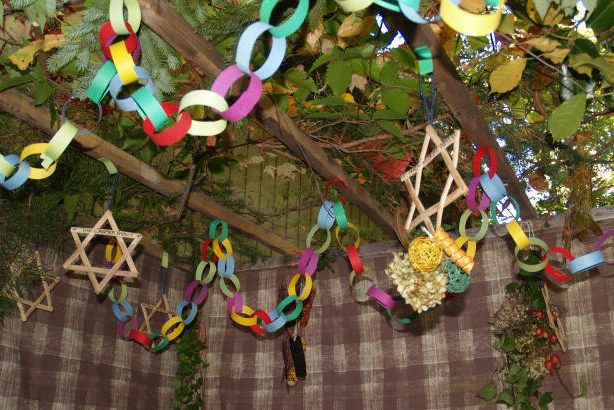Our Sages have said, in Masechet Shabbat (133) the following: The verse “This is my G-d and I will give Him Beauty,” (Shemot 15:2) may be interpreted in this way …- (The Sages are offering a Midrashic explanation to answer the unasked question, “How can Man give anything to G-d?” Who was the Creator, and therefore Owner, of, literally, everything – and is the quintessential example of the difficulty of giving presents to one who has everything!)
“Make yourself beautiful before Him in your performance of the “Mitzvot,” the Commandments: “… a beautiful “Sefer Torah,” “Scroll of the Torah;” written for the sake of the Commandment, with beautiful ink, with a beautiful pen, by an expert scribe, and placed in a beautiful covering.”
The above principle, of performing the Commandments in a beautiful way applies to all the (248) Positive “Mitzvot,” or Commandments of the Torah, but has special application to the “Mitzvot” of Sukkot, where “beauty” is not just a quality describing the Commandment, but is an essential part of the Commandment. When the Torah describes an “Etrog,” a Citron Fruit, as a “Pri Eitz Hadar,” (Vayikra 23:40) a “fruit of a tree of beauty,” it doesn’t mean to say only that the fruit should exhibit the quality of beauty, but that beauty should be part of the essential nature of the “etrog.”
To paraphrase Keats, with apologies, “Beauty is the “Etrog; the “Etrog,” Beauty.”
Keats had written, in “Ode on a Grecian Urn,” the following:
“Beauty is Truth; Truth, Beauty
That is all ye know on earth,
And all ye need to know”
(which is somewhat doubtful).
For a Jewish Perspective on “Beauty,” see Rabbi J. Shmidman’s essay, Beauty and the Etrog.
In any case, this concept applies as well to all the “Mitzvot” of Sukkot, with lesser emphasis, perhaps, to the other members of the “four species,” the four members of the fruit and plant “Kingdoms,” which are used together as a “Mitzvah,” but to the Sukkah, itself, as well.
That is why we go to such effort to beautify our Sukkot; to hang pleasant fruit and vegetables, real or imitation, fancy decorative hangings, pictures on the walls of the Land of Israel, of scenes from Jewish History, especially of Times of the Temple, verses from the Bible, portraits of great Jewish Leaders from ancient and less ancient times. It is why we use our best dishes and silverware, glasses and Kiddush Cups; to live in the “Sukkah,” on a temporary basis, in the same manner as we live in our “permanent and secure” homes all year long.
